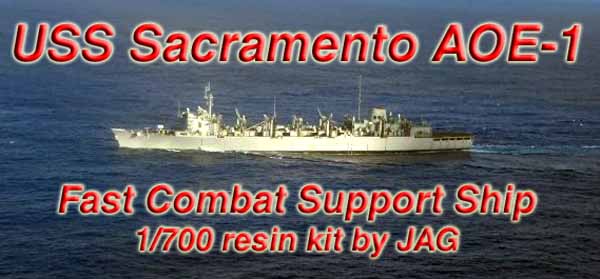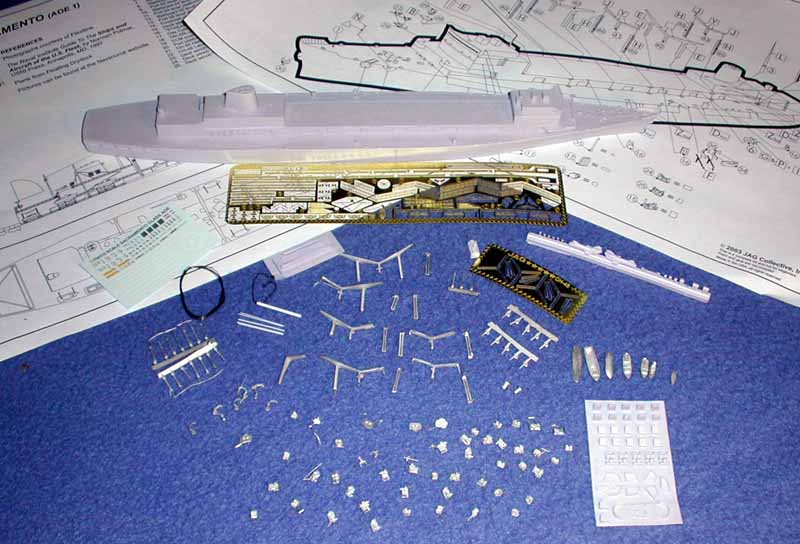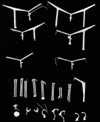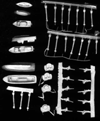
|
| The Sacramento Class was the first of the US Fast Combat
Support Ships designed to keep up with the modern US Navy. She was one
of eight ships built specifically for keeping the fleet supplied at sea.
One of the greatest advantages of the US Navy battle groups is their ability
to stay at sea for extended tours of duty. This class of ship enables those
ship to continue to operate in time of war and crisis by supplying them
on the go. It can rapidly replenishes US Navy task forces and can carry
more than 177,000 barrels of oil, 2,150 tons of ammunition, 500 tons of dry stores and 250 tons of refrigerated stores. It receives
petroleum products, ammunition and stores from shuttle ships and redistributes these items simultaneously to carrier battle group ships.
This reduces the vulnerability of serviced ships by reducing alongside time. These ships can simultaneously supply tow ships on either side
with over 1.5 million gallons per hour of Navy Standard fuel oil, JP-5
aviation fuel, and/or aviation gasoline. In addition the two CH46 helicopters
can transfer supplies to other ships in the group.
The Sacramento and her first sister the USS Camden are unique in that
their propulsion systems were originally installed in the uncompleted Iowa
class Battleship the Kentucky BB-66. When the uncompleted Kentucky was
scrapped her propulsion system was split between the two ships. The
Sacramento was commissioned: March 14, 1964 and served in the Viet Nam
war. She has served in the Pacific and is home ported at Bremerton, WA.
Sacramento earned 15 battle stars for service in the Vietnam War and continues
to serve to this day.
Specifications:
Displacement 18,884 tons (light) 49,956 tons (full load);
Length 793'
Beam 107'
Draft 38' (max.)
Speed 26 kts.
Complement 22 Officers, 530 Enlisted
Aircraft two CH46E Sea Knight helicopters
Armament NATO Sparrow missiles, two twin 40 mm gun mounts, replaced
by two Phalanx CIWS
Propulsion four boilers, two geared steam turbines, two shafts, 100,000
shp
Other ships in class:
AOE-2 Camden
AOE-3 Seattle
AOE-4 Detroit
AOE-6 Supply
AOE-7 Rainier
AOE-8 Arctic
AOE-10 Bridge |

Kit Contents |
|
|
| The kit comes in the distinctive JAG tube, although this
one is super sized due to the large size of this ship. Measuring about
14" this is a large kit. I never cease to be amazed at the quality of the
casting on JAG kits. This one is no exception, in fact it raises the bar
further with fine detailing and impressive casting. The bottom of the hull
is hollowed out to reduce the casting material needed to fill the mold,
as well as help to maintain a more consistent wall thickness allowing for
more even curing of the resin. |
Click images
to enlarge
 |
 |
| A look at the forward superstructure reveals the amazing
thin section of the upper deck. Note the clean molding making this casting
look more like a master than the final product. All along the hull you
can see the conduit and hatch details.
The hull sits perfectly flat and needs no cleanup other than a light touch
at the waterline. The deck and winch placement is even lightly etched onto
the deck surface allowing for easier equipment placement.
It is hard to find any fault in this kit, but if I were to find one thing
that could be improved it would be a helicopter hanger that could be opened
up. |
|
|
| Typical of most JAG kits this one include most of the superstructure
cast in place. The extra resin parts are cast on a thin resin wafer and
include extra platforms and deck equipment including the gas cylinders
racks and deck winches. |
 |
Photo's of pre production parts test fitted together.
|
| The refueling derricks are cast in white metal. Most parts
have small strips of metal flash still attached to them. This allows the
metal to flow through out the mold and to fill completely. Most of this
flash fell away as I handled the parts, the rest is easy to remove with
your hobby knife. The other deck deck equipment is very well cast and will
require only a minimal cleanup.
Ships boats and the anti aircraft weapons are also included in the metal
parts, again they are well cast with a minimum of flash. |
|
|
| A brass photo etch fret is included with the railings and
derrick bracing, fittings and radar assembly. The fret is relief etched
and the only thing missing is the deck railings. JAG omits these items
to save cost for modelers who choose not to use them and also knowing that
many of us have plenty of them in our spare parts boxes. Take note of the
yardarms and their platforms. |
 |
 |
| This kit even include anchor chain, and fine wire for the refueling
lines. Plastic rod is also supplied for boat derricks. It is nice to see
these parts included in the kit rather than sending us on a last minute
trip to the hobby shop to get them. |
 |
|
|
| Two CH-53's are included with their own photo etch set. They are well
molded and include resin landing gear and folded and deployed rotor blades. |
 |
|
The instructions consist of two B-size sheets with a parts list and history,
as well as a plan and profile view showing the completed ship. There are
two exploded views showing the ship in different stages of completion.
These are clear and easy to follow and the only possible thing missing
is some detailed rigging diagrams. |
| A decal sheet is included with number to do the first 4 ships in the
class. Battle "E"'s and salad bars are also included. Deck markings are
also there for the helo deck and a nice touch is the black oval sheets
to use on the hull cutouts. This decal is well registered and all you have
to do is carefully cut around each item you wish to use. |
 |
|
|
| Conclusions:
It is great to have an underway replenishment ship to resupply our Battle
groups. This kit will really open the door for some great diorama possibilities.
It can be used to model any of the Sacramento class. The kit represents
the Sacramento as built, but with the addition of a CIWS and a few other
items it can be used to do a more modern version. A must have for any 60's
to present day modeler. For ordering details click the JAG logo.
 Links
and reference: Links
and reference:
|


















 Links
and reference:
Links
and reference:
